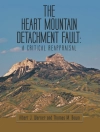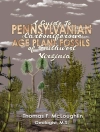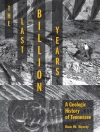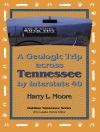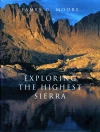This volume brings together the geological, geomorphological and ecological aspects of Japan’s natural heritage, arguing for dynamic conservation of such heritage and explaining their key characteristics in an accessible format for general readers. Sites from World Heritage Properties (Natural), UNESCO Global Geoparks, and National Parks of Japan representing key facets of this heritage are analyzed in depth, and the text is supplemented with color photographs and useful information for potential travelers. The volume is divided into thematic sections that help understand the diversity of Japan’s natural heritage, with supplementary information on conservation, tourism trends, local culture and lifestyles. In addition, chapters analyzing nature’s mechanisms that engender diverse heritage landscapes and conservation/sustainable management schemes make this volume a valuable resource for both general readers and those with more specialized interests.
Daftar Isi
Introduction.- Geology of the Japanese Islands: An Outline.- Volcanic Archipelago: Volcanism as a Geoheritage Characteristic of Japan.- Shiretoko Peninsula: Dynamic Interaction between Geology, Geomorphology and Ecology at The Interface of Terrestrial and Marine Systems.- Shirakami Mountains: Old-growth Forests of Siebold’s Beech Supporting Biodiversity in a Dynamic Landscape.- Ogasawara Islands World Heritage Area: An Outstanding Ecological Heritage.- Yakushima Island: Landscape History, World Heritage Designation and Conservation Status for Local Society.- The Origin and Development of Geoparks in Japan: Reflections from a Personal Perspective.- San’in-Kaigan UNESCO Global Geopark: Geology and Conservation of the Oriental Stork.- Muroto Geopark: Understanding the Moving Earth.- The Interface of Geology, Ecology and Society: The Case of Aso Volcanic Landscape.- The Mt. Unzen Disaster: A Terrible Learning Experience.- Challenges for Geoconservation in Contemporary Japan.- The Lake Akan Area: A Future Geopark.- Oze Wetland: The Birth Place of the Nature Conservation Movement in Japan.- Mount Fuji: The Volcano, the Heritage and the Mountain.- Synthesis.
Tentang Penulis
Abhik Chakraborty is a Lecturer at Center for Tourism Research, Wakayama University. His research interests include complex environmental systems, landscape change, nature conservation and the Anthropocene.
Kuniyasu Mokudai is currently the CEO of Japan Geoservice Inc, a consulting firm for the protection and interpretation of geological heritage. His field of specialization is mountain geomorphology and nature conservation science.
Malcolm Cooper is Emeritus Professor at Ritsumeikan Asia Pacific University. He has held previous appointments at the Universities of New England, Adelaide and Southern Queensland (Australia), and Waiariki Institute of Technology (New Zealand). He has worked in the environmental planning and tourism policy areas for Federal, State and Local Governments in Australia, and as both a private environmental consultant and a tourism education consultant to the Governments of Sri Lanka, China and Vietnam.
Mahito Watanabe is at the Geological Survey of Japan, AIST. His field of specialization is Geology, especially biostratigraphy of the Neogene sediments. He has been instrumental in introducing and disseminating the Geopark concept in Japan. He is also currently involved in evaluation of global geoparks as a Member of the UNESCO Geopark Council and networking of geoparks as Member of the Exective Committee of the Global Geoparks network and the Advisory Committee of the Asia Pacific Geopark Network.
Shamik Chakraborty is a postdoctoral research fellow at the Institute for the Advanced Study of Sustainability, United Nations University (UNU-IAS), and a Visiting Research Fellow at the Integrated Research System for Sustainability Science (IR3S), The University of Tokyo. His research interests include socio-ecological systems, particularly, the study of human-environment interactions in coastal and river basin environments.


